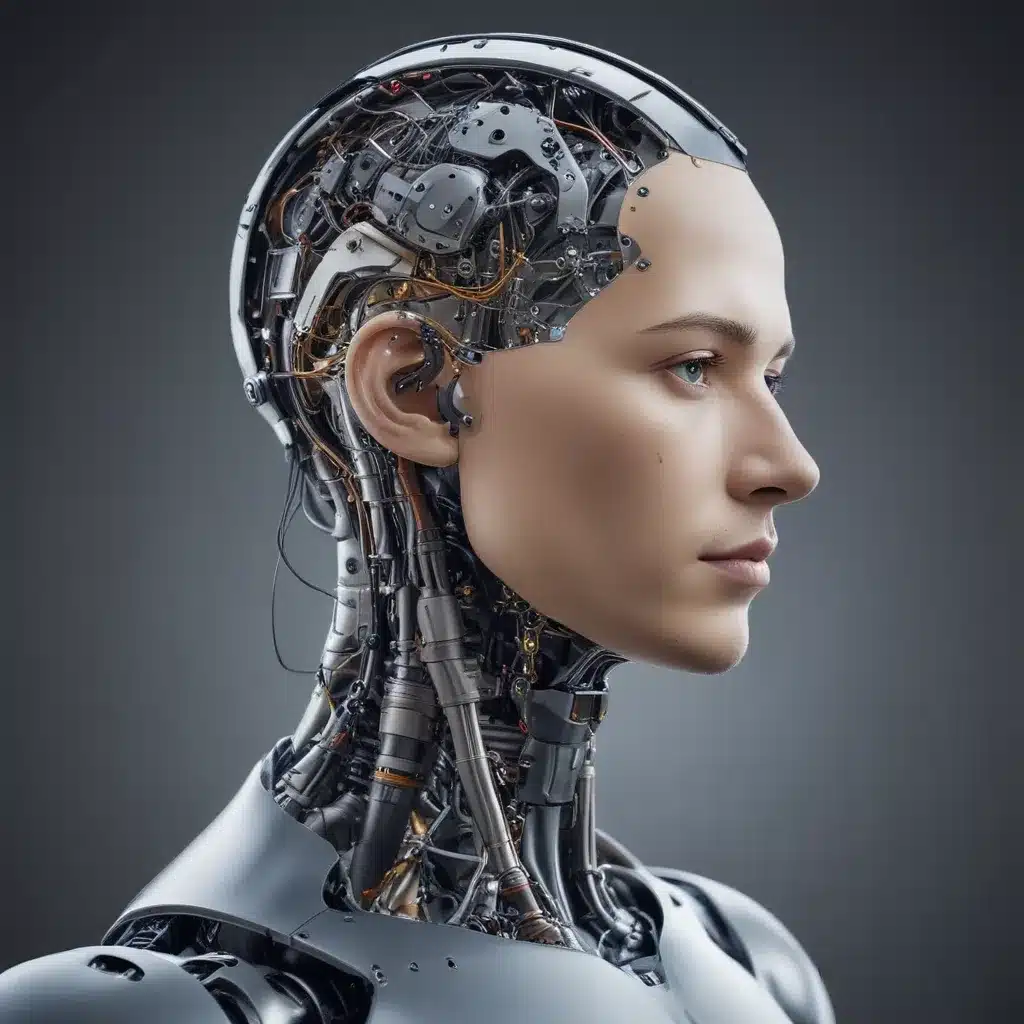
The Dawn of a New Era
I’ve always been fascinated by the relationship between man and machine. The advancements in artificial intelligence (AI) have been nothing short of breathtaking, and I can’t help but wonder what the future holds for this symbiotic partnership. As I delve deeper into the subject, I’m struck by the profound implications that AI-augmented intelligence could have on our lives, our societies, and the very fabric of our existence.
The rapid progress in AI has opened up a world of possibilities, from autonomous vehicles that could revolutionize transportation to intelligent assistants that can streamline our daily tasks. But what intrigues me most is the potential for AI to augment and enhance human intelligence. The prospect of seamlessly merging our cognitive capabilities with the raw processing power and analytical prowess of machines is both thrilling and thought-provoking.
The Cognitive Symbiosis
One of the key aspects of AI-augmented intelligence that captivates me is the idea of cognitive symbiosis. The notion that humans and machines can work in tandem, each leveraging their unique strengths to tackle complex problems, is truly remarkable. I envision a future where our decision-making processes are enriched by the real-time analysis and recommendations of intelligent algorithms, allowing us to make more informed and strategic choices.
Imagine a world where doctors can harness the power of AI to rapidly sift through vast troves of medical data, identify patterns, and provide personalized treatment plans tailored to each patient’s unique needs. Or consider the potential impact on scientific research, where AI-powered simulations and data analysis could accelerate the pace of discovery and unlock new frontiers in fields like physics, biology, and astronomy.
The Blurring of Boundaries
As I ponder the future of AI-augmented intelligence, I’m struck by the blurring of boundaries between human and machine. The lines are becoming increasingly blurred as we integrate AI-powered tools and technologies into our daily lives. Smart home assistants that can anticipate our needs, wearable devices that monitor our health, and autonomous systems that handle mundane tasks – these are just a few examples of how AI is already seamlessly weaving itself into the fabric of our existence.
But what happens when this integration becomes even more profound? When AI systems become so deeply embedded in our lives that they become an extension of our own cognitive capabilities? This raises fascinating questions about the nature of consciousness, identity, and the very essence of what it means to be human. As we venture into this uncharted territory, we must grapple with the ethical implications and ensure that the development of AI-augmented intelligence is guided by principles of fairness, transparency, and human-centricity.
Navigating the Challenges
Of course, the path towards a future of AI-augmented intelligence is not without its challenges. I’m keenly aware of the concerns and anxieties that often surround the topic of AI – from fears of job displacement to worries about the potential for AI systems to be misused or abused.
One of the key issues that must be addressed is the need for robust governance frameworks and ethical guidelines to ensure that the development and deployment of AI technologies are aligned with our values and best interests. As AI becomes more sophisticated and autonomous, we must be vigilant in safeguarding against unintended consequences and the potential for AI-powered systems to amplify existing biases or create new forms of societal inequity.
Embracing the Opportunities
Despite these challenges, I remain deeply optimistic about the future of AI-augmented intelligence. I see a world of unprecedented possibilities, where human intelligence and machine intelligence work in perfect harmony to unlock new frontiers of knowledge, creativity, and problem-solving.
Imagine a future where AI-powered virtual assistants can serve as tireless collaborators, freeing us from the drudgery of menial tasks and allowing us to focus on higher-level thinking and strategic decision-making. Or envision a world where AI-enhanced prosthetics and assistive technologies empower individuals with disabilities to lead more independent and fulfilling lives.
The potential applications of AI-augmented intelligence are truly limitless, and I’m excited to see how this technology will continue to evolve and transform our world. As we navigate this new frontier, it will be crucial to maintain a human-centric approach, ensuring that the development of AI is guided by our values, our aspirations, and our deep-rooted desire to create a better future for all.
Conclusion: Embracing the Future
As I reflect on the journey we’ve taken, I’m struck by the profound implications of AI-augmented intelligence. This is not just a technological revolution; it’s a fundamental shift in the way we perceive and engage with the world around us. By embracing the opportunities presented by this symbiotic relationship between man and machine, we have the power to redefine the limits of human potential and usher in a new era of unprecedented progress and prosperity.
I’m eager to see how the future of AI-augmented intelligence will unfold, and I invite you to join me in this exciting exploration. Together, let us navigate the challenges, address the ethical concerns, and unlock the boundless potential that lies before us. For in doing so, we may just uncover the keys to a brighter, more enlightened future – one where the partnership between human and machine propels us towards a world of unimaginable possibilities.












